
The Sustainable Development Goal (An Introduction with Action) event took place from 2 to the 27 November 2020. The programme was conducted virtually via Zoom by the Department of Soft Skills Competency (DSSC) and the Division of Community and International Networking (DCInterNet) in collaboration with ENGAGE ‘Towards an Inclusive Society’, a non-profit organisation based in Nepal. It focused on the promotion of youth empowerment, especially youth living with disabilities.
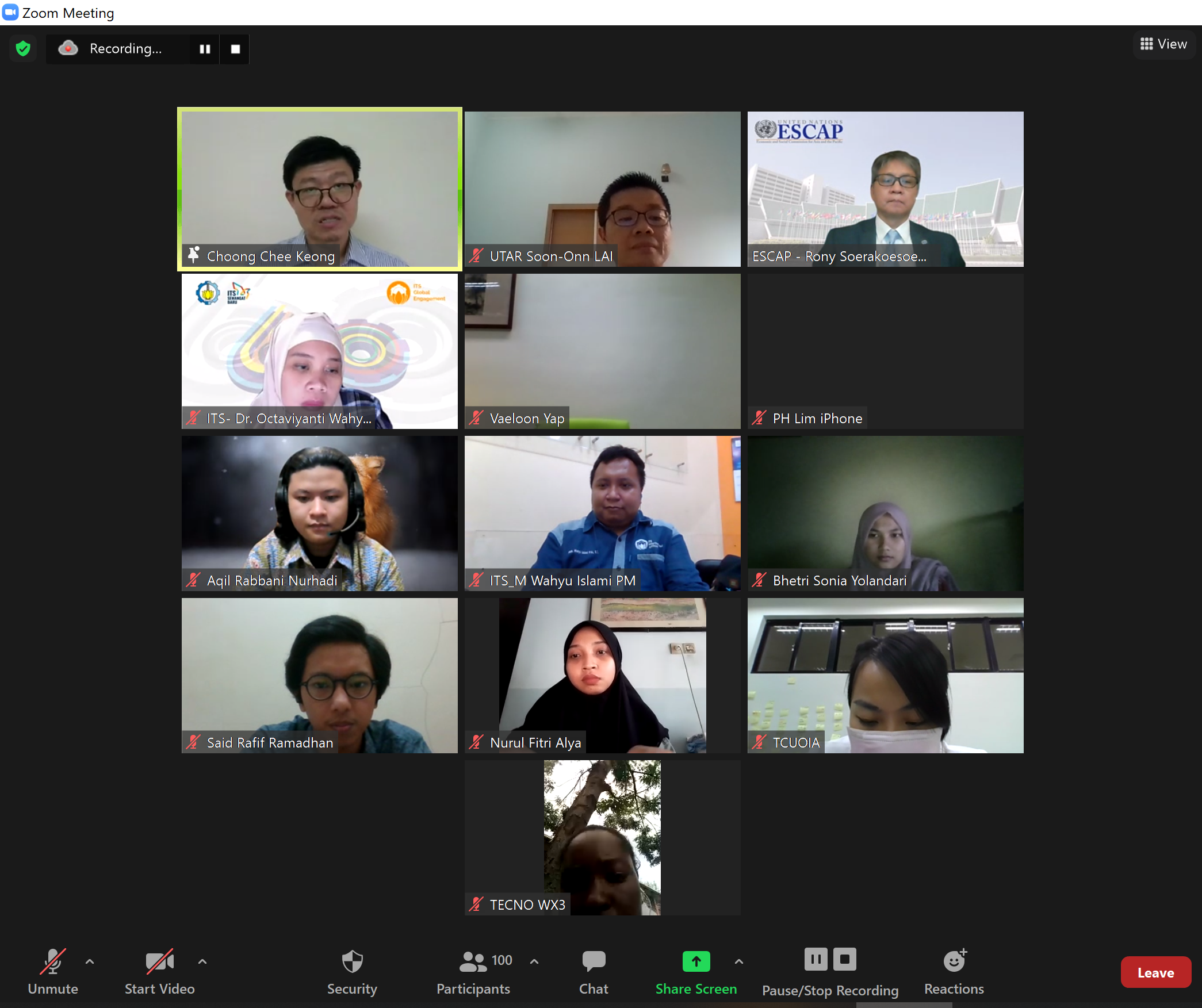
Prof Choong (top
row, most left) delivering his welcome speech
The opening
ceremony took place via Zoom on 26 October 2020.
UTAR Vice President for Student
Development and Alumni Relations Prof Dr Choong Chee Keong delivered his
welcome speech. Thereafter, Subregional Office for South East Asia United
Nations Economic and Social Commission for Asia and the Pacific Head Rony
Soerakoesoemah delivered his opening speech as well.
The objective
of the programme was to offer an introduction to the Sustainable Development
Goals (SDGs) through which the participants gained both fundamental and
practical insights into the goals, with a focus on the international and
regional “system” supporting and promoting them. Most importantly, they
learnt to implement the practical skills through the actions they took to
promote and implement the goals. The participants were from Malaysia,
Indonesia, Kenya and India.
It was an
engaging event whereby various participants took part in this virtual
programme and they got to share their experience and challenges encountered
in their respective country. The sessions were divided into three sessions
which took place three times a week.
Participants were also given the opportunity to share, discuss and
reflect on what they learnt over the week and each participant was asked to
keep an online journal.
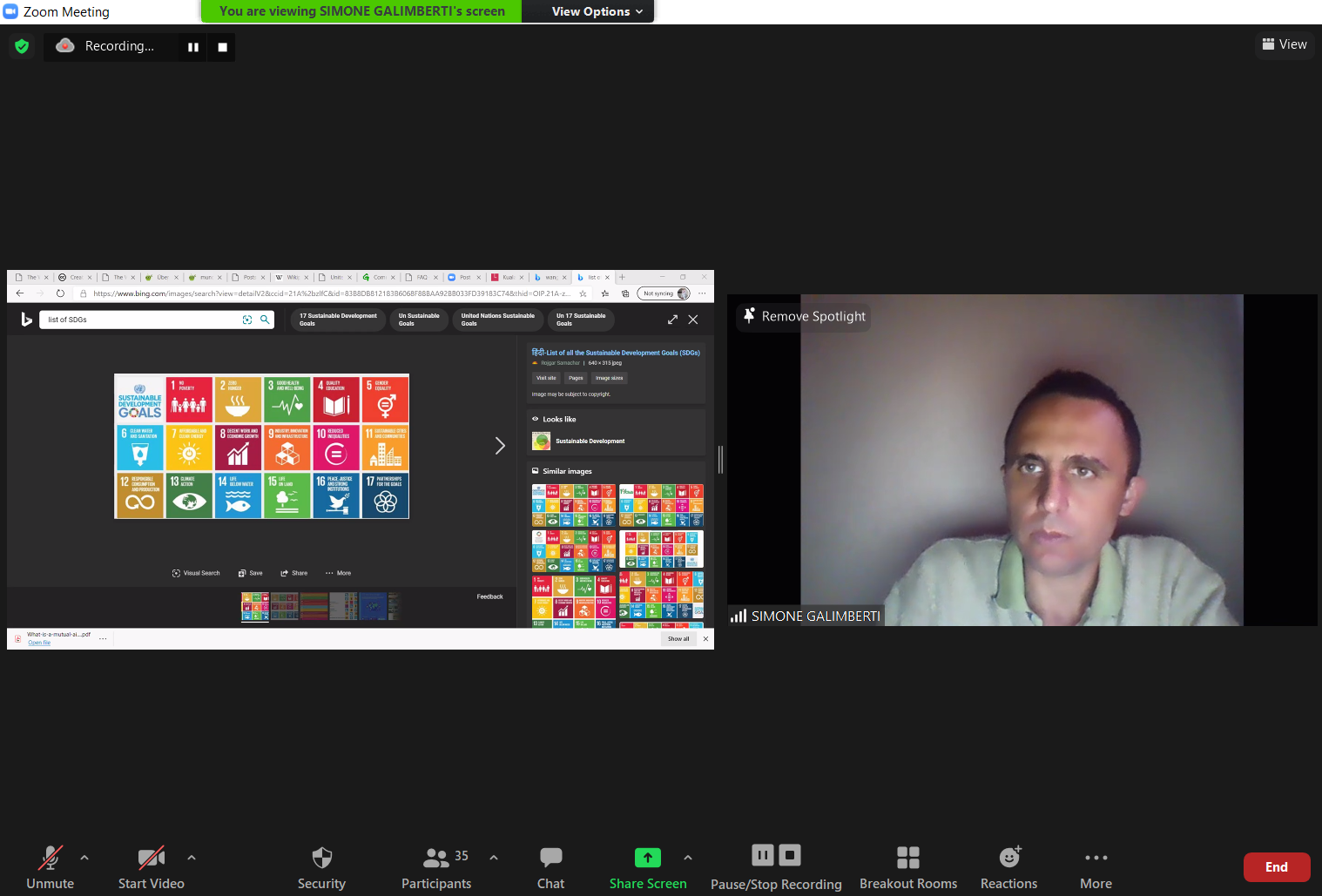
Simone during the
first session “Understand the
SDGs”
The session
was divided into three parts. The first session was on “Understand the
SDGs”. The theme for the first session was ‘Foundations’. The content
covered on the background from MDG’s to SDG’s, and then it was followed by
discovering the SDG’s. ENGAGE Founder Simone
Galimberti spoke about Human Civilization, Convention and Climate Change
and what “Future do you want”? There were slides presentation, pictures of
building and people from around the world. Students were also given a quiz.
In the second session, the theme was on ‘Connecting and Discovering’.
Participants were asked to link up an activity based on interest, passion,
strengths and urgency which can be turned into a goal and it can be related
to SDG and its indicators. Similarly, participants were even asked to
explore other SDG’s and its commonalities.
In the third
session, Simone spoke about SDGs in ASEAN and East African Community (EAC),
and shared a video message by Deputy Secretary-General Amina J Mohammed who
spoke about human sufferings and social and economic disruption, reminding
participants their common humanity and interdependence. Thereafter Simone
gave examples on economies that were suffering amidst the Covid-19 pandemic.
According to him, public hospitals
in Nepal are not efficient compared to private clinics. “Government
hospitals in Nepal are not so convenient, hence patients have to pay even
for free medication. Dk Hanis Batrisyia binti Pengiran Sabdin, a participant
from Malaysia, gave her feedback on the Public Health System in Malaysia.
According to her, the system in Malaysia is good because it is affordable.
Hanis gave example on the Covid-19 pandemic, whereby the treatment given was
free and fully funded by the government.
The second
part was focused more on the SDGs. The theme for session four was ‘Education
for Sustainable Development’. This session covered the history of Education
for Sustainable Development followed by the Basic Tenants of Education for
Sustainable Development. The theme for the fifth session was ‘Climate
Change’. Simone spoke about Antonio Guterres, a Portuguese politician and
diplomat serving as the ninth secretary-general of the United Nations.
According to Simone, Antonio Guterres encouraged the people to move away
from fossil fuel. He proposed regulation and took precautionary measures.
Simone then spoke about transportation and the effectiveness of commuting in
public transport. The World Bank came up with a strategic direction for the
year 2050. Basically, it focuses on transformation, such as food system,
what we consume; energy and mobility as well as electricity (the use of
renewable electricity and its end users). Using airplane fossil fuel as an
example, he pointed out several ways technology advancement can end the
carbon cycle. Simone also gave example on how to change our way of living
and stop pollution. He then shared about the Defense Advanced Research
Projects Agency (ARPA), a research and development agency of the United
States which is responsible for the development of emerging technologies. A
video was shown on how a plane takes off and its cycle on what the carbon
does as well as how it is related to climate change.
DCInterNet Director Assoc Prof Dr Lai Soon Onn presented a talk on “The Roles of Higher Education Institution in Tackling Climate Change”. In his presentation, Dr Lai said that this climate change was due to human activities and the advancement in the industry. These have resulted in producing more pollution in terms of quality and quantity. Dr Lai then played a video that featured pollutions that were taking place in other countries and how it affected the people. He gave a brief introduction on climate change, its impact on university rankings, roles of higher education institutions in tackling climate change, and the actions that should be taken by the universities. He then spoke about the effects of the greenhouse. Examples were given on what is Solar and Infrared radiation and what it does. The next point was Climate mitigation as in “How to Reduce the Effect of Climate Change”, “Kyoto Protocol and Paris Agreement (Increasing of temperature and increasing the ability to adapt the adverse impacts of climate change)” and “Adapting to Life in a Changed Climate”. He also spoke about informing and assisting the communities in identifying possible ways to overcome and understand future threats. The examples given were early earthquake warning system and integrated water resource management.
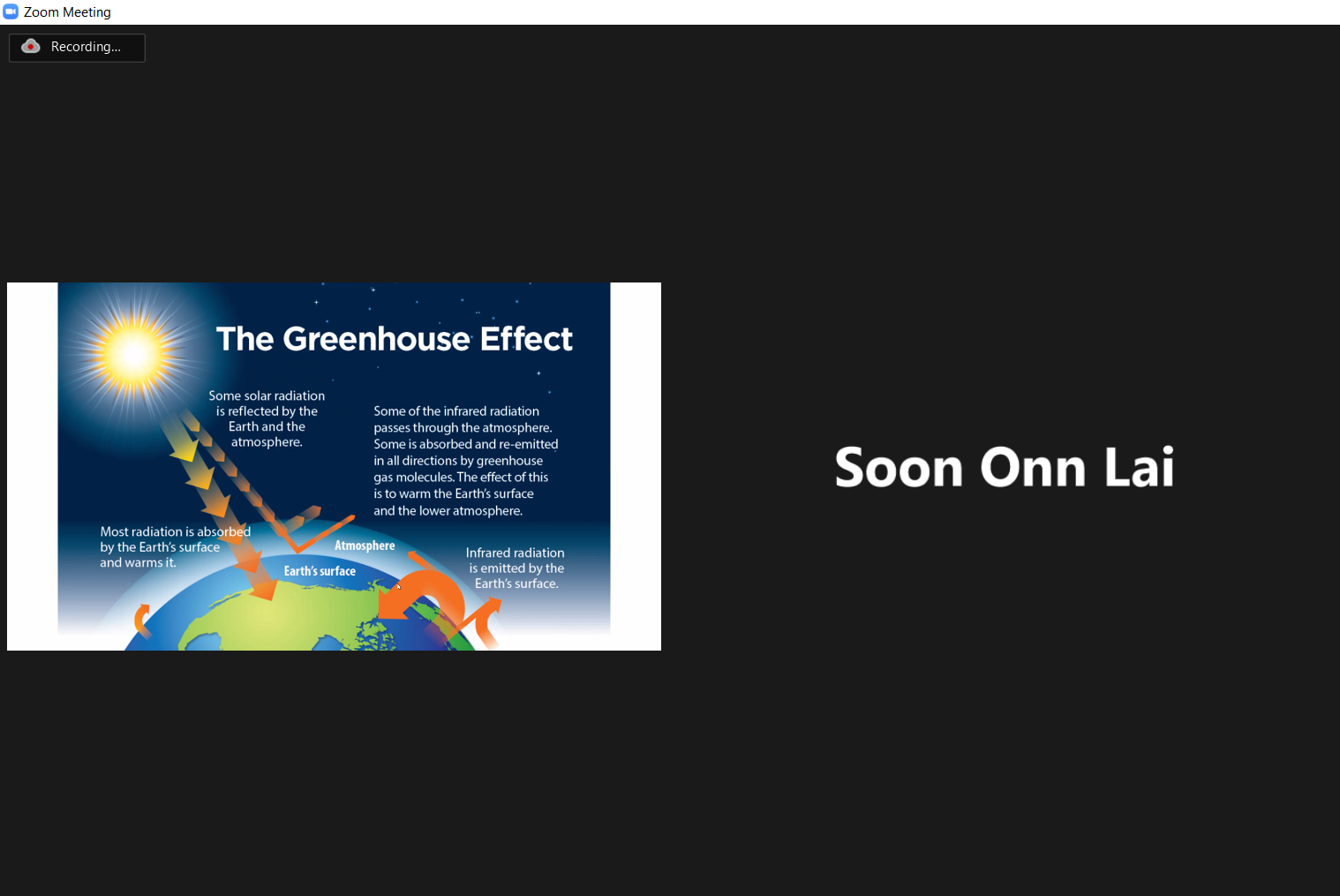
Dr Lai presenting the effects of
greenhouse
According to
the statistics, climate change is caused by a global phenomenon. This causes
changes in the weather pattern, rise of sea level and ice mass loss. Dr Lai
shared the statistic of climate change in Malaysia, Sabah, Malaysia Borneo
and Penang. As for the university rankings, based on the SDGs’ 2019 data, it
only focuses on eleven SDGs. According to Dr Lai, all these goals are
somehow interconnected. He mentioned three points to measure the
university’s success which were research on climate change, the adoption of
low carbon energy and environment of the university. Based on these three, a
university as an education hub, needs to deliver and transfer the knowledge
to the community. Speaking of how to contribute together for the climate
change, he said firstly, we need to provide local education and explain the
impact of climate change. Secondly, we need to work with the local or
national government to address climate change besides collaborating with
NGOs.
The third part was more into action which focused on the Basic of project management and social enterprise that relates to SDG. The theme of the sixth and seventh session was ‘Doing and Promoting SDGs’. Simone shared some visuals and raised a question asking participants which one should be at “rest” during this Covid-19 pandemic in South East Asia, Eastern Africa and everywhere. The answers were Education and Food. “Basically, it is all about tackling inequality,” said Simone. He also mentioned that the economy is booming. There is a growth, however, it is not evenly distributed. The second point was Bridge the Digital Divide. Participants shared ideas and gave feedback on why schools should close. According to one participant, the infrastructure system in his country, Kenya, was not very comprehensive. Moreover, it was not well-distributed among the middle-class. Simone then gave examples of challenges faced by other economies like Malaysia, China and Europe.
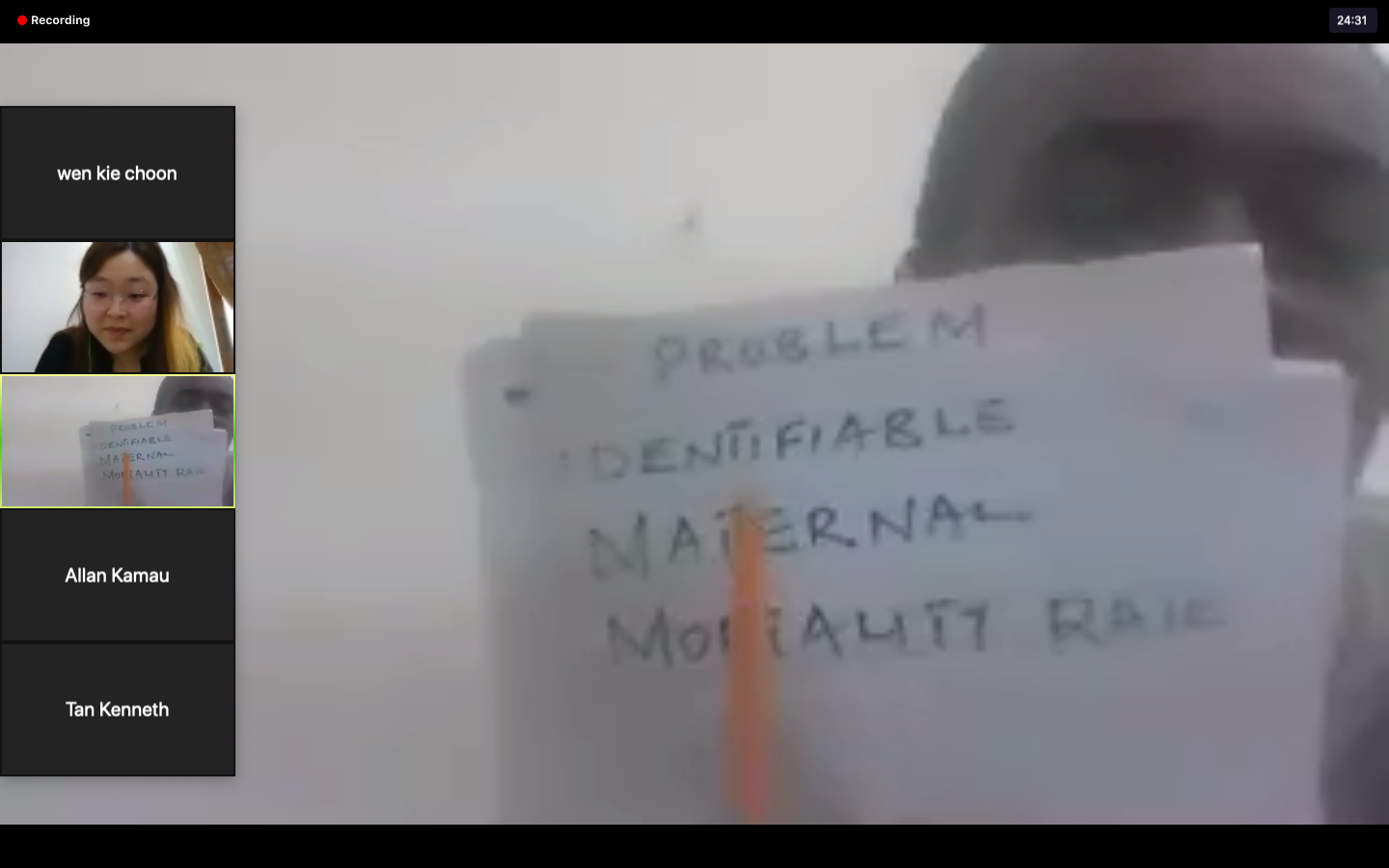
One of the
participants highlighting the problems faced in Kenya
At the end of
the programme, participants had better clarity on the Agenda 2030 and its
links with the ASEAN 2030 vision. Furthermore, they were able to identify
and implement the best practices of SDGs from South East Asia (SEA), the
Eastern Africa Region and India. They were also exposed to project
management and planning skills to enable them to create practical ideas to
carry out a project, upon the completion of this programme.
In the closing
session, participants from Meru University of Science and Technology,
Sepuluh Nopember Institute of Technology and UTAR gave presentations. It was
followed by Simone’s closing speech where he shared his experience with the
participants. Finally, the session was closed with another closing remark by
Rony. Two weeks later Simone had a follow-up
session with the participants and discussed if they had taken any steps or
put into practice what was discussed during the closing session.
Furthermore, there were visual presentations and one of the students shared
ways to reduce plastic waste. It was an opportunity given to participants to
talk and share insights, ideas, doubts through a peer-to-peer forum.
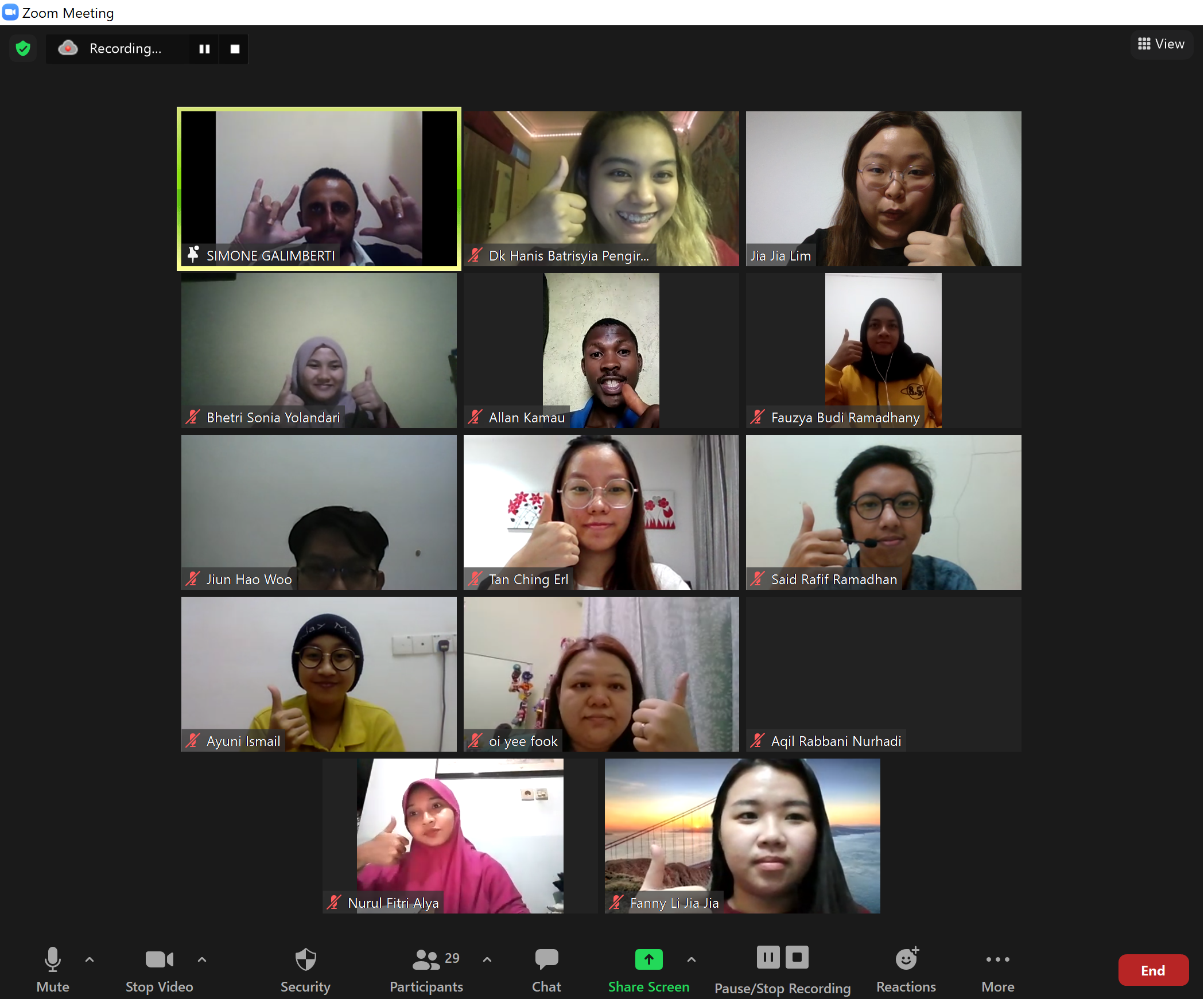
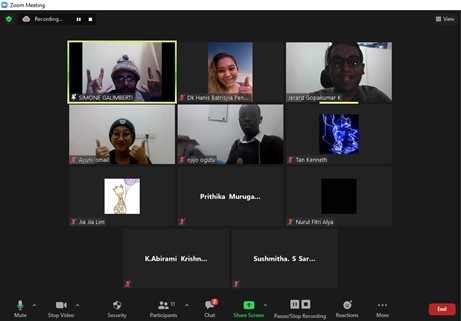
Speakers and participants at the end of the programme
![]()
![]()
Wholly owned by UTAR Education Foundation Co. No. 578227-M LEGAL STATEMENT TERM OF USAGE PRIVACY NOTICE